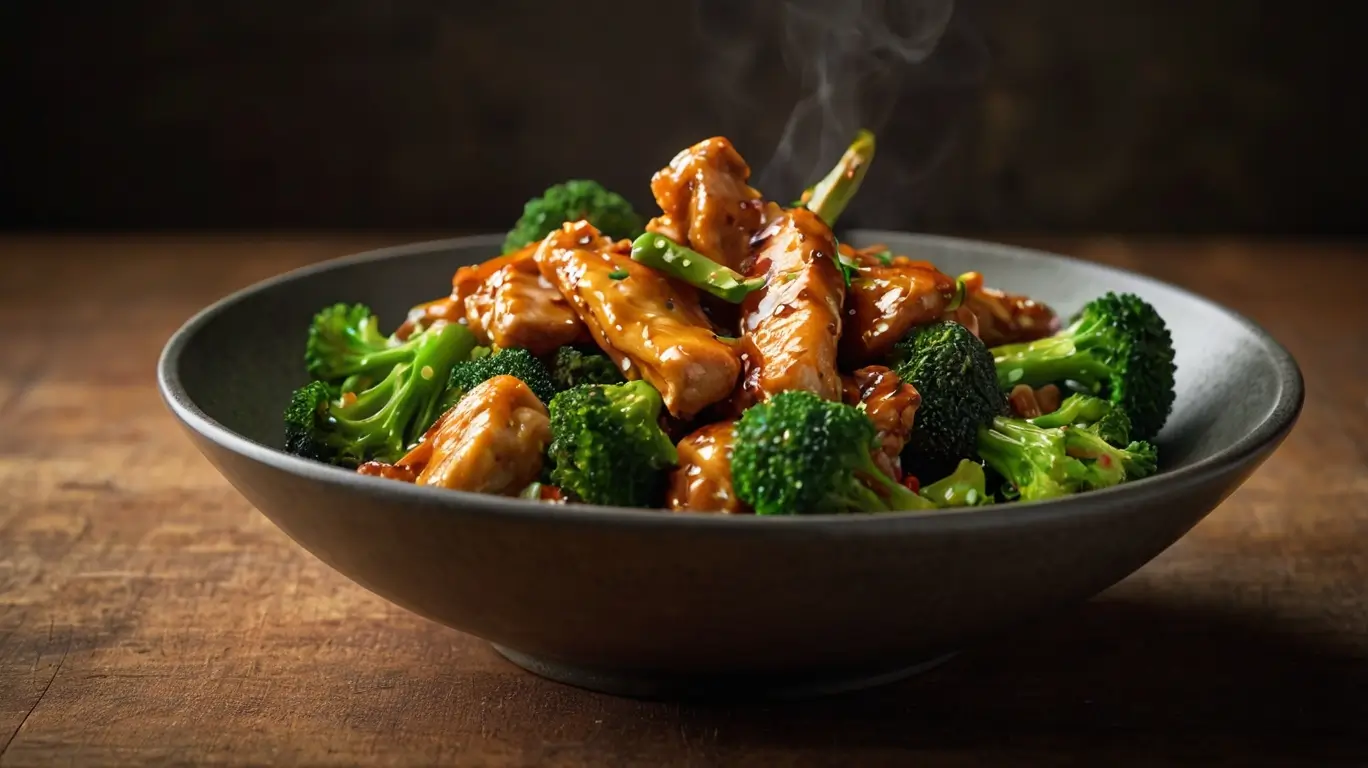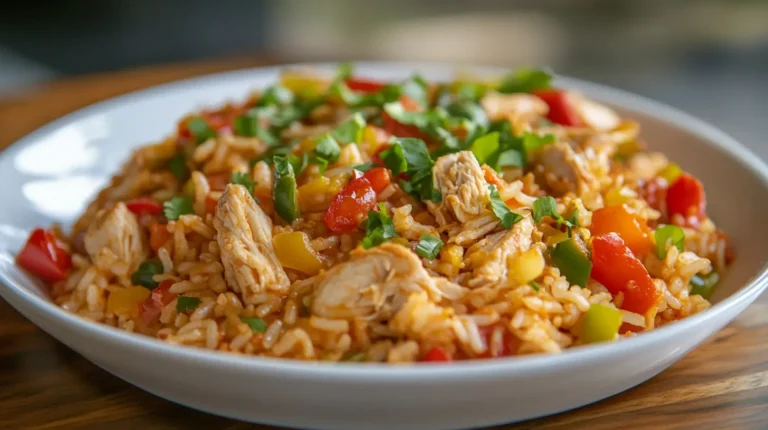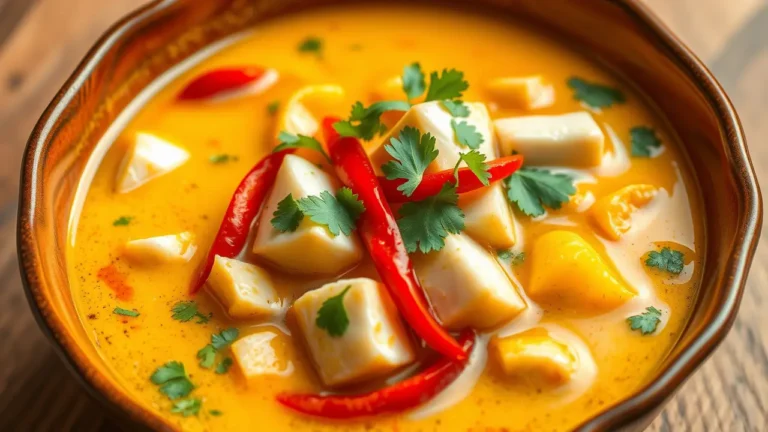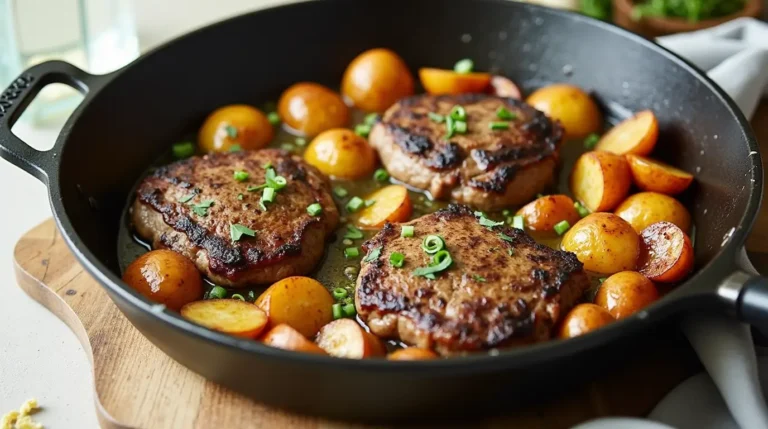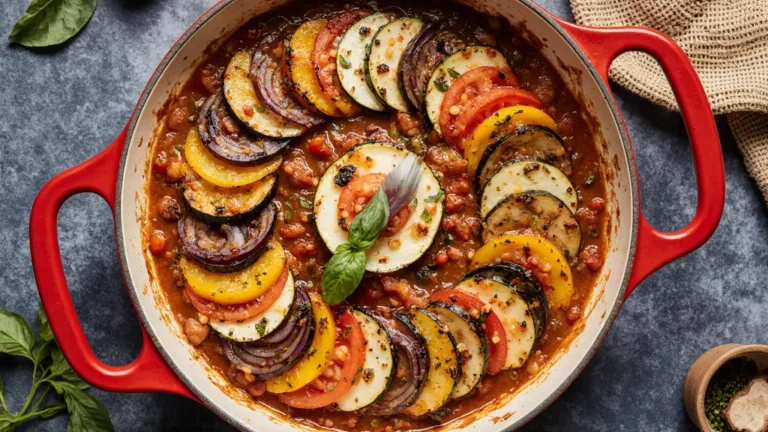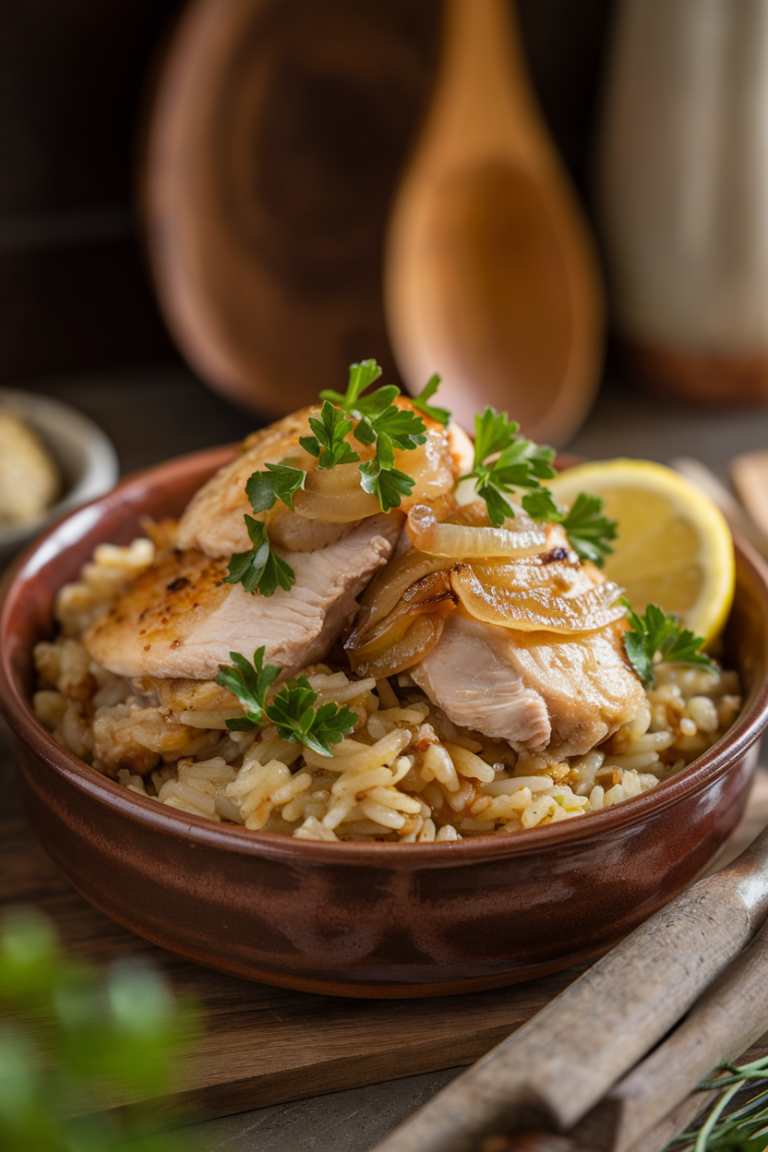Chicken and Broccoli Stir-Fry: 7 Tips to Make It Better
Few meals strike the perfect balance between flavor, nutrition, and speed like chicken and broccoli stir-fry. A beloved staple of Chinese-American cuisine and a weeknight hero in countless kitchens, this dish combines tender chicken, crisp-tender broccoli, and a savory, slightly sweet sauce that clings to every bite. In less than 30 minutes, you can have a wholesome dinner on the table that tastes just as good—if not better—than takeout.
In this article, we’ll dive into everything you need to know: the ingredients, step-by-step method, tips for success, variations, nutrition, and even how to store leftovers. By the end, you’ll be ready to cook a restaurant-quality stir-fry in your own kitchen.
Table of Contents
What Is Chicken and Broccoli Stir-Fry?
Chicken and broccoli stir-fry is a dish where sliced chicken is quickly cooked with fresh broccoli florets in a hot pan or wok, then tossed with a flavorful sauce typically made of soy sauce, garlic, ginger, and oyster sauce. Unlike heavier fried dishes, stir-frying uses high heat and minimal oil, creating a meal that’s light, fresh, and packed with texture.
This dish is often associated with Chinese-American takeout menus, but its roots go back to traditional Chinese cooking methods, where stir-frying is used to highlight the freshness of ingredients. Today, chicken and broccoli stir-fry is cherished worldwide as a quick, healthy, and adaptable meal.
Ingredients for Chicken and Broccoli Stir-Fry
Here’s a complete list of what you’ll need for 4 servings:
For the Chicken:
- 1 pound (450 g) boneless, skinless chicken breasts or thighs, cut into thin strips
- 2 tablespoons cornstarch (for coating)
- 1 tablespoon soy sauce
- 1 tablespoon neutral oil (canola or vegetable oil)
For the Vegetables:
- 4 cups broccoli florets (about 2 medium heads of broccoli)
- 1 medium yellow onion, thinly sliced
- 3 cloves garlic, minced
- 1 tablespoon fresh ginger, grated
For the Sauce:
- ¾ cup water or chicken broth
- 3 tablespoons low-sodium soy sauce
- 2 tablespoons oyster sauce (or hoisin sauce if preferred)
- 1 tablespoon brown sugar or honey
- 1 teaspoon sesame oil
- 1 tablespoon cornstarch (mixed with 2 tablespoons water for a slurry)
- Pinch of crushed red pepper flakes (optional, for heat)
For Serving:
- Cooked white rice, jasmine rice, or noodles
- Sesame seeds or chopped green onions for garnish (optional)
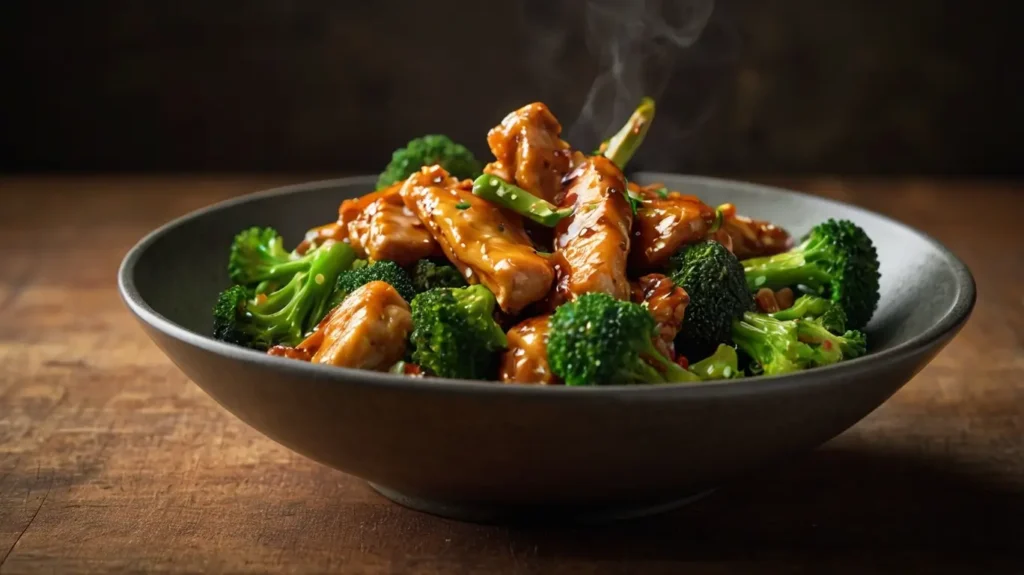
Step-by-Step Cooking Process
Step 1: Prep the Chicken
In a medium bowl, toss the sliced chicken with 2 tablespoons cornstarch and 1 tablespoon soy sauce. This step ensures a light coating that crisps up when cooked and helps the sauce cling to the meat later.
Step 2: Make the Sauce
In a small bowl, whisk together water (or chicken broth), soy sauce, oyster sauce, brown sugar, and sesame oil. Set aside. This will be your stir-fry sauce base.
Step 3: Cook the Chicken
Heat a large skillet or wok over medium-high heat. Add 1 tablespoon of oil, then spread the chicken in a single layer. Let it cook undisturbed for 2–3 minutes to develop a golden crust, then stir-fry until just cooked through. Transfer to a plate.
Step 4: Stir-Fry the Aromatics and Vegetables
In the same pan, add onion, garlic, and ginger. Stir-fry for 30 seconds until fragrant. Add the broccoli and 2–3 tablespoons of water, then cover for 2 minutes to steam lightly. Remove the lid and stir-fry for another 2–3 minutes until bright green and tender-crisp.
Step 5: Combine Everything
Return the chicken to the pan. Pour in the sauce, then add the cornstarch slurry to thicken. Toss everything together until the sauce coats the chicken and broccoli evenly and turns glossy.
Step 6: Serve
Spoon the stir-fry over steamed rice or noodles, sprinkle with sesame seeds or scallions if desired, and enjoy immediately.
Pro Tips for Success
- High heat is key: Stir-frying requires quick cooking at high temperatures to sear ingredients without steaming them.
- Don’t overcrowd the pan: Cook in batches if necessary to keep chicken crisp.
- Keep broccoli crisp-tender: Steam lightly before stir-frying to avoid mushiness.
- Use fresh garlic and ginger: These aromatics elevate the dish far beyond bottled substitutes.
Variations You Can Try
One of the best things about chicken and broccoli stir-fry is how adaptable it is. Here are some delicious variations:
- Spicy Version: Add 1–2 teaspoons of sriracha or fresh chili for heat.
- Teriyaki Style: Replace oyster sauce with teriyaki sauce for a sweeter flavor.
- Vegetarian: Swap chicken for tofu or tempeh and use vegetarian oyster sauce.
- Low-Carb: Serve over cauliflower rice or zucchini noodles instead of rice.
- Deluxe Veggie Stir-Fry: Add mushrooms, bell peppers, or snap peas for extra crunch.
Nutritional Benefits
This dish is not only flavorful but also nutritionally balanced:
- High Protein: Chicken provides lean protein for muscle repair.
- Rich in Fiber & Vitamins: Broccoli delivers vitamin C, vitamin K, and fiber.
- Low in Calories: Compared to fried dishes, stir-fry uses minimal oil.
- Customizable: Easy to make low-sodium or gluten-free with ingredient swaps.
On average, one serving (without rice) contains around 280–320 calories, 25 g protein, 15 g carbs, and 10 g fat.
Common Mistakes to Avoid
- Overcooking chicken: Leads to dryness. Slice thinly and cook quickly.
- Adding sauce too early: The sauce should go in at the end to prevent burning.
- Overcrowding the pan: Causes steaming instead of searing.
- Skipping the cornstarch coating: This prevents the chicken from being flavorful and saucy.
Storing and Reheating
Chicken and broccoli stir-fry is best eaten fresh, but leftovers can be stored safely.
- Refrigeration: Store in an airtight container for up to 2 days.
- Freezing: Possible, but broccoli may lose its crispness.
- Reheating: Use a skillet over medium heat to preserve texture. Microwave works in a pinch but can make broccoli soggy.
Chicken and Broccoli Stir-Fry Around the World
While the dish is iconic in Chinese-American restaurants, it has variations globally:
- China: Stir-fries often feature lighter sauces with fresh ginger and garlic.
- United States: Heavier, saucier versions popularized through takeout menus.
- Fusion Versions: Thai-style with chili and basil, or Mediterranean-inspired with olive oil and herbs.
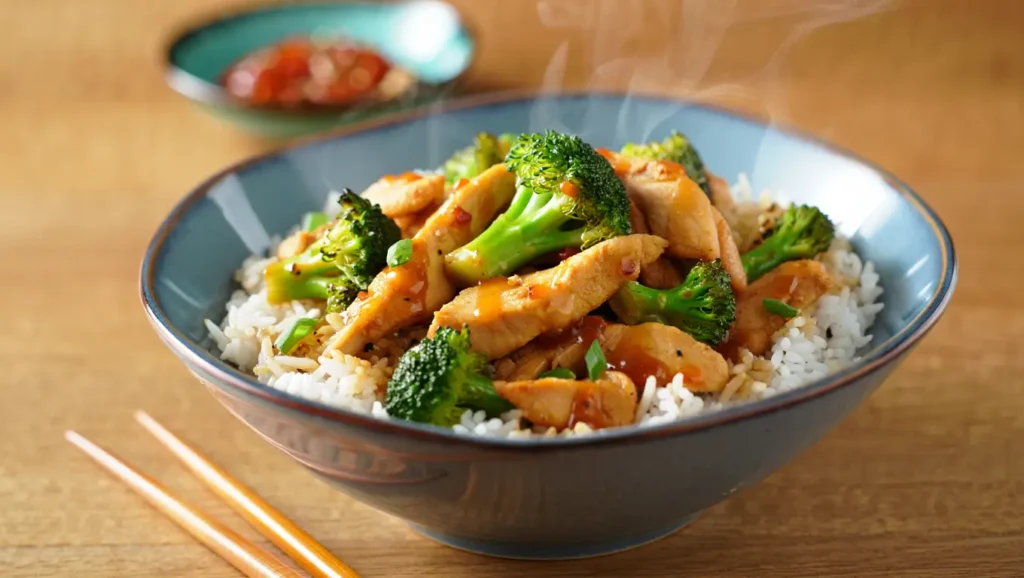
FAQs
Can you use frozen broccoli?
Yes, but thaw first and pat dry to avoid excess water in the stir-fry.
Do you need to boil broccoli before stir-frying?
Not necessary—light steaming in the pan keeps it crisp and bright green.
What’s the best oil for stir-fry?
Use neutral oils with high smoke points like canola, peanut, or vegetable oil.
How do you thicken the sauce?
Cornstarch slurry (1 tablespoon cornstarch + 2 tablespoons water) works best.
Is chicken and broccoli stir-fry healthy?
Absolutely—it’s lean, packed with veggies, and lower in calories than fried dishes.
Can I substitute oyster sauce?
Yes, with hoisin sauce, teriyaki sauce, or even soy sauce plus a touch of sugar.
Conclusion
Chicken and broccoli stir-fry is a perfect example of why stir-frying remains one of the most beloved cooking methods: fast, fresh, and flavorful. With just a handful of ingredients and 30 minutes, you can create a dish that rivals your favorite restaurant takeout while being healthier and customizable to your tastes.
Next time you need a quick weeknight dinner, skip the delivery menu—grab your wok, some chicken, and a head of broccoli, and make this classic stir-fry at home.
If you love tropical desserts, you might also enjoy this Strawberry Cake,

